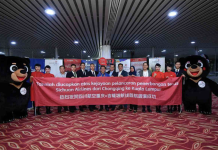SINGAPORE, 3 October 2024: The International Air Transport Association (IATA) announced that 100 airline CEOs have committed to the IATA Safety Leadership Charter since its launch at the 2023 edition of the IATA World Safety and Operations Conference.
The announcement that Lynne Embleton, CEO of Aer Lingus, joined the Charter was made during the IATA World Safety and Operations Conference, which was held in Marrakech, Morocco, from 1 to 3 October.

The Aer Lingus CEO and the 99 other CEOs who have signed the IATA Safety Leadership Charter account for about 70% of global traffic.
“Flying is safe because aviation’s safety culture begins at the very top management level,” said IATA’s Director General Willie Walsh. “In their commitment is a call for the rest of the industry’s CEOs to join them in this fundamental Charter. And by the next IATA World Safety and Operations Conference, I look forward to being much closer to universal coverage.”
“Signing this charter further reinforces Aer Lingus’ unwavering dedication to safety and strengthens our commitment to lead by example in promoting a safety-first mindset across the industry,” said Aer Lingus CEO Lynne Embleton.
The IATA Safety Leadership Charter, developed in consultation with IATA members and industry stakeholders, outlines eight key leadership principles that CEOs pledge to uphold.
Key principles
Leading by example: Reinforcing safety through both words and actions.
Raising awareness: Fostering safety awareness at all levels, from the boardroom to frontline staff.
Integrating safety into business: Embedding safety into the strategic, operational, and performance metrics of the organisation.
Building capacity: Developing the internal capacity to manage safety and achieve organisational safety objectives proactively.
Fostering trust: Creating an environment where employees feel responsible for safety and are empowered to report safety issues without fear.
Establishing clear expectations: Defining and communicating acceptable and unacceptable safety-related behaviours.
Promoting shared responsibility: Encouraging all employees to take ownership of safety within their roles.
Continuous improvement: Regularly assess and enhance the organisation’s safety culture.
“IATA supports continuous safety improvement with a three-pillar strategy consisting of Safety Leadership (including both safety leadership and culture), Safety Risk (identifying and mitigating risks through data collection and analysis from audits, accident reports, and other sources) and Safety Connect (providing the links so that safety leaders report, discuss, and resolve safety issues).”






